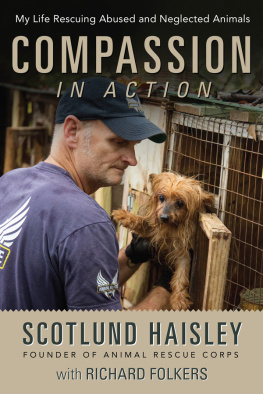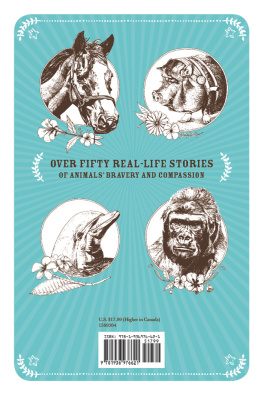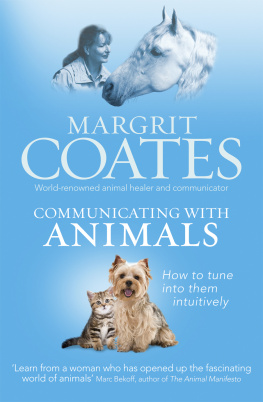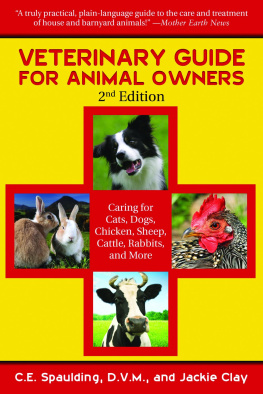Copyright 2016 by Scotlund Haisley with Richard Folkers
All rights reserved. No part of this book may be reproduced in any manner without the express written consent of the publisher, except in the case of brief excerpts in critical reviews or articles. All inquiries should be addressed to Skyhorse Publishing, 307 West 36th Street, 11th Floor, New York, NY 10018.
Skyhorse Publishing books may be purchased in bulk at special discounts for sales promotion, corporate gifts, fund-raising, or educational purposes. Special editions can also be created to specifications. For details, contact the Special Sales Department, Skyhorse Publishing, 307 West 36th Street, 11th Floor, New York, NY 10018 or .
Skyhorse and Skyhorse Publishing are registered trademarks of Skyhorse Publishing, Inc., a Delaware corporation.
Visit our website at www.skyhorsepublishing.com.
10 9 8 7 6 5 4 3 2 1
Library of Congress Cataloging-in-Publication Data is available on file.
Cover design by Rain Saukas
Print ISBN: 978-1-63450-570-3
Ebook ISBN: 978-1-63450-973-2
Printed in the United States of America
This book is dedicated to those who wait for justice and an end to their suffering. May they soon be wrapped in arms of compassion.
CONTENTS
INTRODUCTION
The relationship between humans and animals has evolved throughout history. Academics may debate who domesticated whom, but in the twenty-first century, most people embrace the companion animals they call pets as family members. Companion animals are fortunate. Most people view other animals as a sourceof food, entertainment, raw materials like leather, additives to cosmetics, and more.
Debates about how we currently treat animals and how we should treat animals will, I believe, lead to ever-more equitable treatment of animals globally. The number of those practicing compassion with their choices and actions will grow and inspire others by example.
The portion of the world I work to change every day is one where compassion for animals is missing. I have dedicated my life to forgotten, abused, and neglected animals, animals who suffer in tiny, dark enclosures with no companionship, no veterinary care, and often without edible food or clean water. I work with law enforcement agencies to close down places of abuseone at a time. I am deeply honored to make this my lifes work.
My purpose on these pages is to expose you to my world and enlist your help to change itto create the world we want to see. I hope this book will inspire positive change in your daily life and encourage you to be part of the greater solution. And if you see animals being abused or neglected, please contact your local authorities and/or report the situation to Animal Rescue Corps at .
Thank you.
CHAPTER ONE
OPERATION UNBRIDLED SPIRIT
W hen you get close to one, you can almost always smell a puppy mill. Its an odor you remember. Not a pleasant memory, like the irresistible, wafting scent of a freshly bathed family dog drowsily nuzzling against your chest. This smell is ever so slightly sweet but acrid and nauseating, a nose-piercing vapor emitted by piles of accumulated, rotting feces that have been marinating for weeks or months, if not years, in urine that has decomposed to become ammonia, a colorless gas with a particularly pungent smell. It clings to your nostrils. Its a smell that, once experienced, you can conjure at willin the same way you might remember, perhaps, the sulfur stench of a stink bomb released in a school cafeteria, the chlorine that permeates the air around a swimming pool, or the sterilized, medicinal smell of a hospital ward. Ammonia is a smell of decay and death.
As we drive the last few blocks to the house in Wayne County, Kentucky, on a muggy Thursday morning in late September, there is just a hint of the telltale odor that betrays this place. What we come upon is just a rundown, nondescript house on a country road, with a front faade largely obscured by untrimmed trees and shrubs. A pickup truck, a van, and a camper trailer are parked in the driveway, in front of a cluttered carport. As our caravan, led by police and emergency vehicles, drives onto the property, up the sloping driveway, there is nothing about the house or its yard that offers a clue to its naturesave for the small, stenciled sign out front that reads Taylors Kennel and, above it, a street sign that says, Kennel Ln. Although I have never before visited this property, it is much like dozens, if not hundreds, of similar places I have been, escorted by law enforcement.
My team and I wait in the driveway as a detective knocks on the front door, shouting Sheriffs Department. His knocks continue and grow louderpounding overhand with the fleshy part of his fistover the next five or six minutes. Finally, a man wearing nothing but a pair of denim shorts emerges. He looks to be in his sixties; his most notable feature is a large, gray, walrus-like moustache. Moments later, a slender blonde woman of about the same age, wearing what look like plaid pajama pants and a blue, short-sleeved top, appears, a cigarette dangling from her lips. With the county attorney just a few feet away, the detective and his sheriff step inside the house, where, according to plan, they explain to the woman details about a seizure warrant I am about to help them execute. With some barking in the background and more of the telltale smell beginning to waft out, we are mere minutes away from verifying, with our eyes, that this is, in fact, a puppy mill, a dog factory hell.
I have to suppress my nerves. It isnt anxiety born from fear that I will encounter scenes of suffering. Ive done that hundreds of times before. I sweat the details because I rescue animals, and my team and I must do everything right. We are spending the money of our donors, and we are potentially risking the trust and credibility of a communitys justice system. If a criminal case falls through, if conditions are not clearly in violation of the law, if someone gets bitten or seriously hurt, if an animal is injured, its my problem. The reputation of my organization, Animal Rescue Corps, is on the line. It was my people, our investigation, my urging, and my assurances that brought us here. A mistake or a misjudgment jeopardizes our ability to rescue abused animals tomorrow, next week, and beyond. I live for this work, and I cant afford to screw it up. Lives depend on me.
Especially in the south, what we have to offer communities is unique and often alien to them. Yet rescuing suffering animals also requires me to focus, in the moment, only on their well-being and not focus on any other agendas, meanings, or missions.
When I founded Animal Rescue Corps, I rededicated myself to a mission as straightforward as our fledgling groups name. Over the years, I have headed up the animal rescue team for the Humane Society of the United States. I ran and redesigned what is still considered the model of humane animal shelters. I have held leadership positions protecting animals in Manhattan, the San Francisco Bay Area, and Washington, DC. Animals are my passion; protecting them is my business, and saving them is my life. Doing wellsatisfying my passion and my professionrequires that I approach each case, each puppy mill, each situation of abuse, with clinical seriousness. There is a time for emotion. There is a time for philosophy and sentiment. First we have to make a case.
The puppy mill owners Facebook page, which was removed shortly after the raid, contained posts and pictures about Christmas and Christian faith, along with preciously decorated pictures of litters of pups. Information alongside some of the images specified dates when the dogs would be available for purchase. The caption on one picture proclaimed, with a certain license for unique spelling, spacing, and punctuation, Ihave7 new babbys,, Her ad on a dog breeders website, now also removed, said, Raised with lots of lovin! Touting her twelve years of dog breeding experience, it added, Puppies are handled daily with lots of tender love & care. Our pups make great family pets and are good with kids. It turned out there was neither tenderness nor care. As to whether there was love, it was certainly not evident in what we found.









